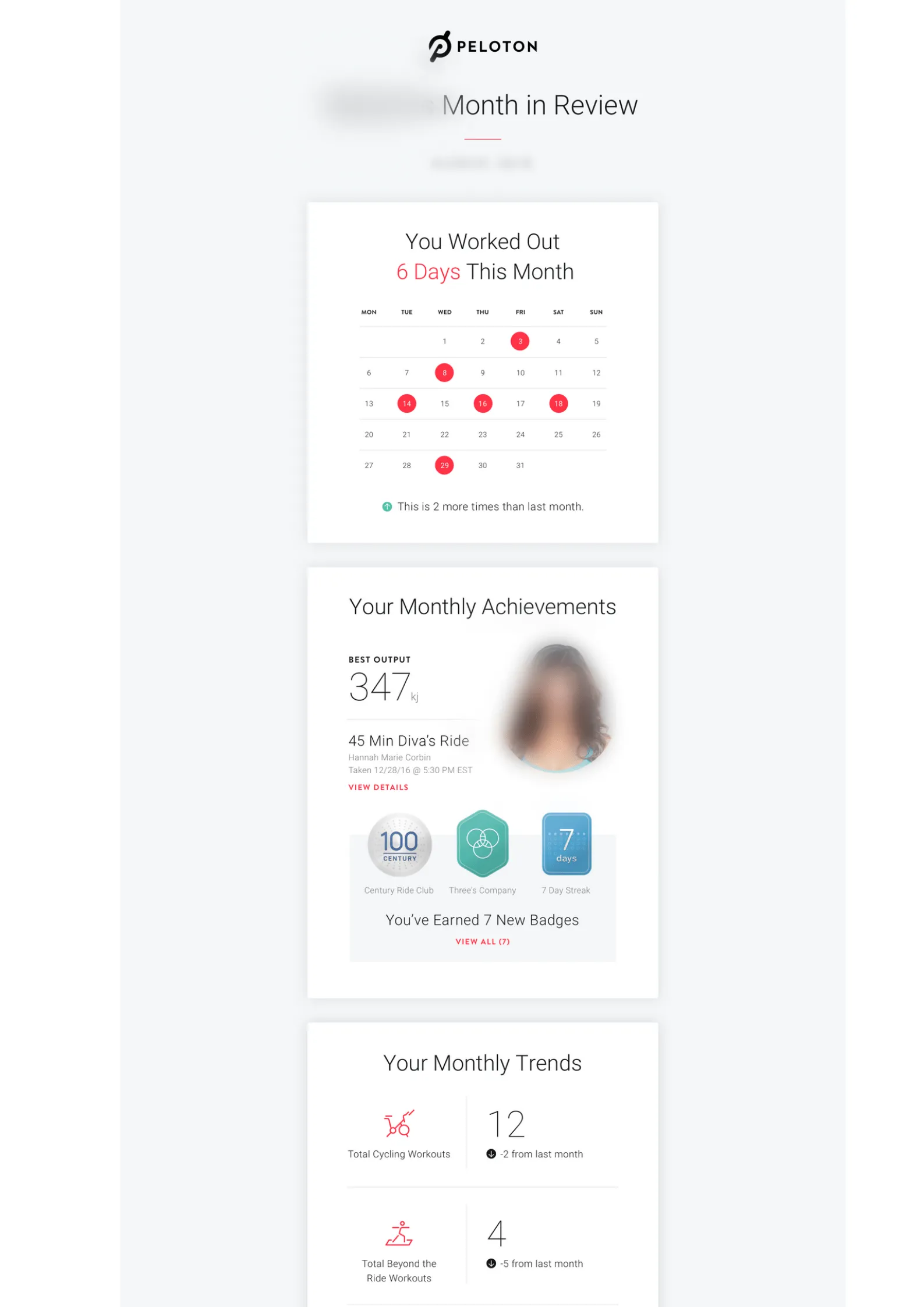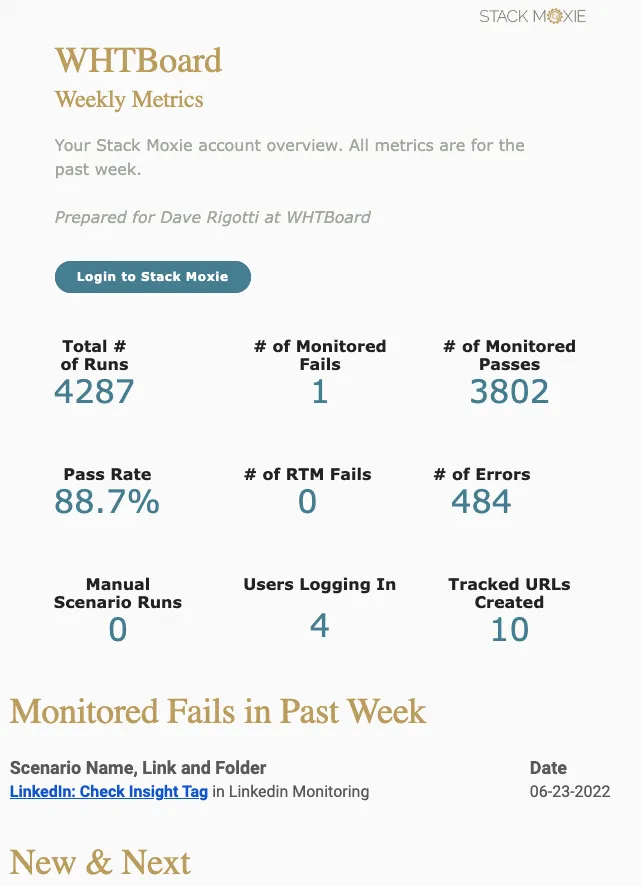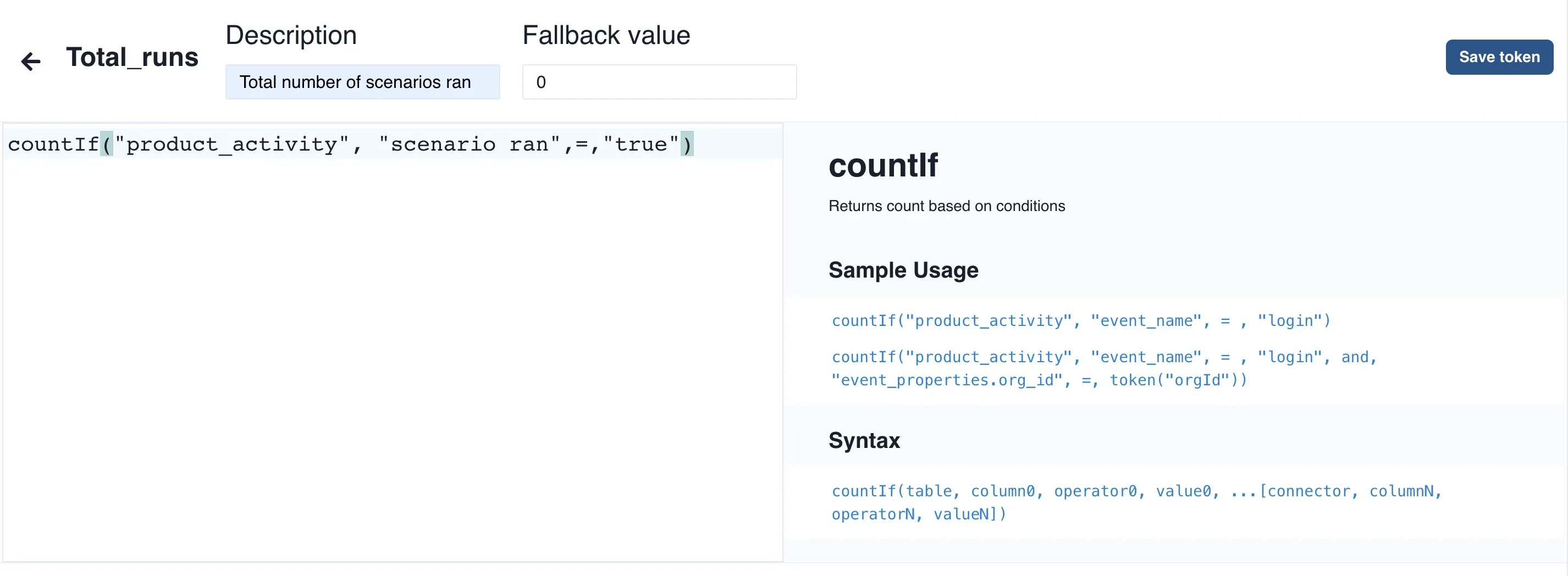Product Engagement, Customer Success, and Product-Led Growth: How Stack Moxie Uses Inflection.io
B2B marketing is moving away from templated email blasts with a little inspiration from our edgy and fun B2C counterparts. Email marketing evolved not only to shed the ho-hum around what (stereo) typically B2B emails are “supposed” to look like but also because our audience evolved.
For ages, marketing in B2B SaaS supported the dominant sales-led growth motion. When the end-user era dawned upon us, we realized that the buying power lies with, no surprises here, the end-user. Product-led growth businesses are exponentially advancing by marketing to the user instead of a buying committee.
The million-dollar question now is, how do we get through to the user fatigued with an overflowing inbox of unread marketing emails?
The simple answer is ‘digest emails’.
What does a great digest email in B2B look like?
Peloton’s month in review, Grammarly’s weekly insights, Spotify Wrapped, Quora’s weekly digest, and many more iconic examples of digest emails from B2C have inspired a trend in B2B. The same underlying principles apply in both scenarios as long as a human is reading your emails. Illustrating your product’s value personalized to the user in a glimpse will make your emails stand out in a crowded inbox.
Here are some basic tips that can make your next email digest delightful
- Structured for easy consumption
Before your customers get into the actual value part of the email, they skim it. We all do!
Organize your content in easy-to-read, skim-friendly sections. Slice and serve the segments of bite-sized content that suits your customers and your business goals as well.
Use white spaces, tables, and graphics along with text to make it digestible.

- Reader-centricity
Sending emails with important announcements and well-researched articles summarized into bite-sized snippets is a great way to build awareness and brand affinity with your customers. But, weigh the value it delivers from your customers’ perspective. Ask yourself, would that information be effective in inspiring the reader to open the next email from you?
A good digest email is a neatly packed bundle of value for your readers. Keep your reader at the center before you compose that next digest email.

- Value Realization
Your customers may or may not want to read all your emails but they want to ‘get value’ from your product that is tailored to their needs. You know how you are progressing every week or month in a glimpse from these digest and emails at the same time reminded of the value you get from using the products.

- Content Relevance
Personalized value is exactly what the best digest emails deliver. They are a pat on the back in the form of personalized stats, like Spotify does.

Consider your reader’s goals with your product based on their firmographic profile before making that template. For example, the product activity you want to show an organization’s admin user would vary from the ones you want to present to other users.
If you are baffled while getting personalized value metrics right for every user or if you see a drop in email engagement metrics, ask for feedback. Let your customers decide what they want to see in the email and when
- Call-to-action
Ah! The good old CTA! Like any other email, adding a CTA is important for email digests. This is your opportunity to encourage logging into your product more, promoting new feature adoption, or even driving self-serve upgrades.

The secret sauce of email digest success is well-illustrated value realization. This is exactly what Stack Moxie wanted to deliver to their customers.
As a product-led growth business, they wanted to further build on this launch pad of value to boost product adoption and engagement. Stack Moxie is one of our very first customers to have brought up the brilliant strategy of digest emails for product-led growth and the giant gordian knot it comes with.
Before we understand the issues in executing the digest email, let’s learn about what Stack Moxie does.
About StackMoxie
Stack Moxie automates testing across sales and marketing tech stacks. Their software monitors for failures in lead routing, marketing attribution, advertising operations, compliance & GDPR, lead scoring, lead lifecycle, and so much more while saving time spent on tedious and error-prone manual testing.
The Digest Email
Their marketing team envisioned a weekly customer success campaign that delivers the important stats from using their product to all of their admin users. This weekly digest email is aimed to illustrate value realization to their customers and drive product adoption and engagement.
Stack Moxie, a product-led growth company using legacy marketing automation faced challenges in executing their weekly digest. Compiling and pulling in product activity data for all users from an organization became a mammoth task for their lean marketing team. On top of this, there were additional bottlenecks with dependency on developers, friction in personalizing the emails, and scaling up the manual effort to cater to their growing customer database.
Challenges Along the Way
Stack Moxie wanted to deliver a single view of weekly statistics about the product activity carried out to the account admins by their organization. Their weekly digest would typically contain a metrics matrix — a table of relevant statistics and their account’s monitored failures — the list of tests run and sync failures detected by Stack Moxie.
- To cook up a perfect email digest, you would need to accrue valuable insights based on the user’s product activity. Legacy marketing automation tools cannot run campaigns based on high volumes of product activity events.
- To be able to show the product’s value, the marketing teams end up spending a lot of time identifying the right product events and getting the relevant data from the product. This challenge comes with its own complexities — dependency on engineering resources to get the data from a product analytics tool or write SQL queries that can fetch data from a database table.
- Identifying users from the same organization or team, the account admins, and personalizing the weekly or monthly metrics to each account, is no walk in the park. One person from Stack Moxie’s marketing team would spend nearly 50 hours every month compiling a list of all organizations from their database, dedupe and extract a final list, match and group users by the organization, fetch their email addresses, and run a compilation to match the org ids in product statistics with the group ids to generate the metrics matrix.
To summarize, Stack Moxie’s marketing team encountered bottlenecks on their way to translating the right product events to personalized metrics that visualize value to customers. Dependency on developers or the data team is a huge clog in the wheel.
This is where Inflection comes in.
Digest Email Success With Inflection
The TL;DR Version
With Inflection, Stack Moxie’s marketing team was able to
- Showcase the value realized from their product to admins and organizations by summarizing the key data points relevant to their business
- Drive product adoption through their weekly communication to admins with valuable insights and nudging them to log in to the product
- Engage their users with a hyper-personalized customer success email digest
- Reduce repeated, non-value-add time for Stack Moxie by automating the process and scaling it to their growing user volume
- Provide air support to their customer success team with deeper insights. With knowledge of customers’ product usage, their CS team can identify early signs to prevent churn and see hand-raisers among the accounts to upsell and expand.
How Inflection enables us to do product-led growth is brilliant. Stack Moxie’s digest email has been a huge success in driving product adoption and improved customer engagement. We continue to grow and so does our ability to scale marketing and customer success with Inflection. - M.H. Lines, CEO, Stack Moxie
To know more about how Inflection helped Stack Moxie achieve their well-articulated goals of running email digest campaigns every week, let’s look at the email itself, in detail.

The email begins with the customer’s company name to show that the metrics that follow are hyper-personalized to their org users.
The 3X3 metrics matrix that follows the CTA button is a consolidation of the total test scenarios run using Stack Moxie in the past week. Summarizing the automated test runs, the success and failure rates illustrate the business value of Stack Moxie to their admin users.
For the admin user, the digest email gives an overview of the health of their marketing, sales, and revenue tech stacks while saving them from the pain of monitoring individual testing activity and their team’s progress.
Stack Moxie checks off some tough-to-achieve boxes with their weekly digest
- The admin users can really see their weekly accomplishments using Stack Moxie
- Improves product engagement by giving a link to login to the Stack Moxie account for a detailed view
- Asks for feedback in further customizing the metrics matrix and opens a direct line of communication with the email’s owner. This helps Stack Moxie tweak and deliver precisely what their customers want to see in the digest email.
Needless to say, Stack Moxie’s customers are loving it!

So, how did the metrics matrix and other details come to be in the weekly email digest?
How Stack Moxie Uses Inflection
Stack Moxie tags and pushes their product events to the Snowflake database through Segment. Since Inflection can easily connect with both Segment and Snowflake via an out-of-the-box integration, setup was a cinch for Stack Moxie.
With Inflection’s token editor, Stack Moxie was able to pull the product metrics relevant to their customers. At the same time, Inflection reads the person and account information from Stack Moxie’s CRM. The unified product data, user, and account information provides a single view of the users to Stack Moxie’s marketing team.
Now that we have the product, person, and account data, we need to mobilize this information into an email.
A typical custom token used by Stack Moxie to fetch data into their weekly digest looks like this.

As the name suggests, their marketing team has to write excel-style functions to create custom tokens as per their use case.
Scaling Campaigns with Inflection
As Stack Moxie grows, their marketing team saves more than 50 hours each month spent on the unscalable manual process of querying data and matching it with account information.
Stack Moxie plans to use Inflection in the future for more marketing campaigns. Celebrating their users’ milestones in product usage to create sticky product users. This entitles sending an email to any Stack Moxie user who crosses a pre-set limit on product and feature usage. And, encourage using the next feature or trying out a new feature that they just released.
Apart from creating more pipeline for sales, Stack Moxie’s marketing team wants to assist their sales and support teams by automating campaigns that drive self-serve revenue. They would use Inflection to trigger internal emails to notify teams of a product-qualified lead (PQL) with a summary of that user’s product activity. This campaign immediately notifies the right stakeholder about a hand-raiser customer so the GTM teams can grab an opportunity to reach out to the customer.
Our customers sometimes miss the real-time notifications Stack Moxie sends if something is broken. But, we noticed that our most engaged customers log into the product when they see a fail. The digest email helps us reinforce this behavior and allows the customers to see all their weekly accomplishments.
With Inflection, we saved a lot of time for our marketing and CS teams in integrating all that valuable data in one place without needing multiple engineering and marketing ops personnel working on it. - M.H. Lines, CEO, Stack Moxie
The marketing team at Stack Moxie uses Inflection to fully automate the process of compiling metrics matrix for their admin users and personalizes the data to their organization. All this while not depending on other teams and saving hours of unsustainable manual effort.
Inflection is designed to activate usage, revenue, and pipeline. Get started for free.

%201.webp)





